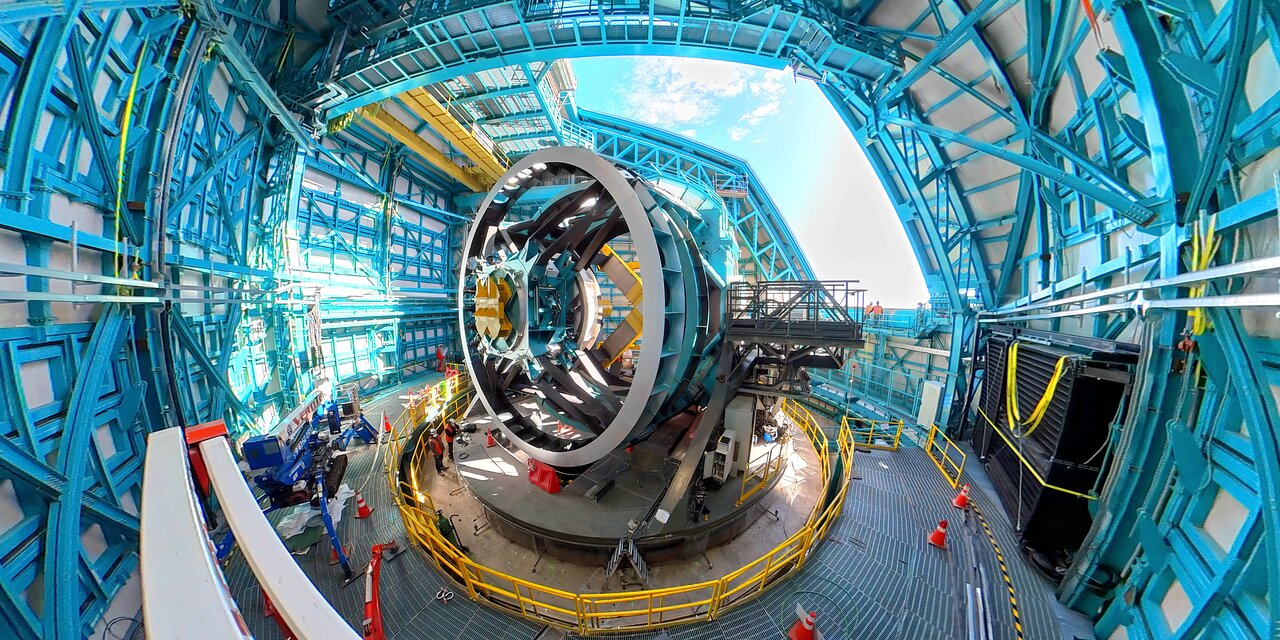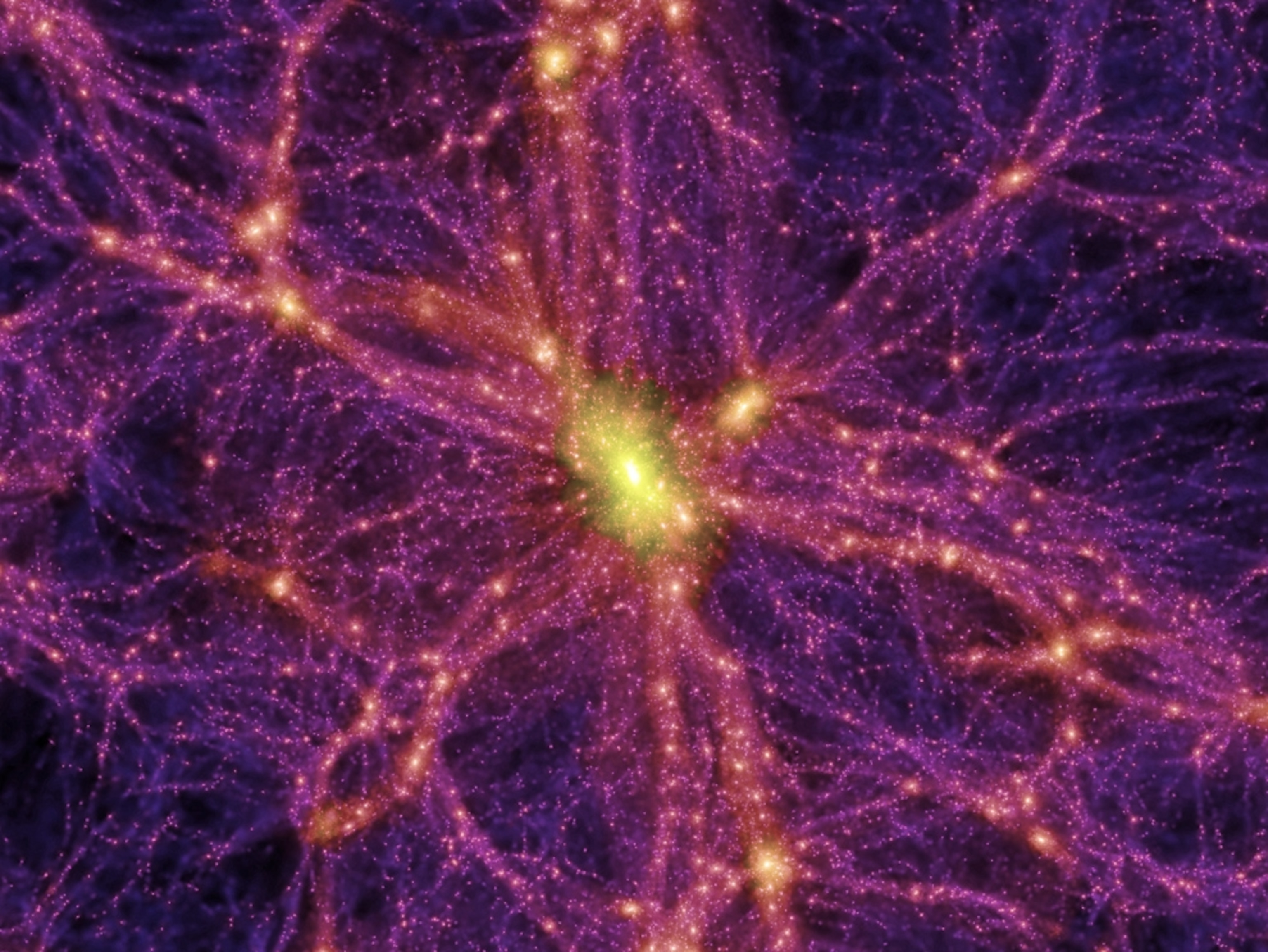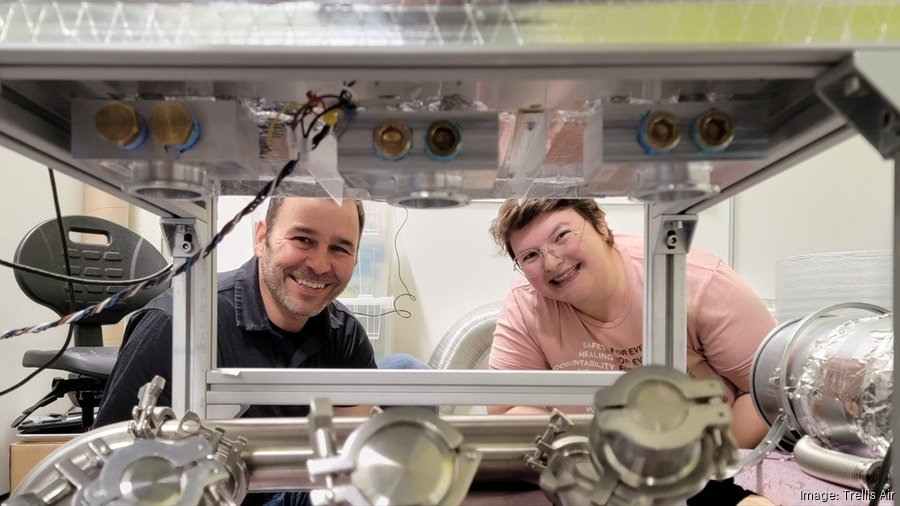The Vera C. Rubin Observatory represents a groundbreaking leap in our understanding of the cosmos, specifically through its ambitious Legacy Survey of Space and Time (LSST) project. Aimed at mapping the Milky Way and uncovering the mysteries of dark matter, this state-of-the-art facility utilizes the massive LSST camera to capture extensive images of the night sky. Recently, the observatory successfully demonstrated its capabilities with the first on-sky images taken by its Commissioning Camera, marking a significant milestone in astronomical research. This innovative approach to cosmic cinematography allows scientists to observe celestial changes over time, enhancing our knowledge of distant galaxies and cosmic phenomena. As we embark on this decade-long journey, the Rubin Observatory stands poised to transform our celestial map and unravel the universe’s most elusive secrets.
Introducing the Vera C. Rubin Observatory, a transformative astronomical institution designed to probe the depths of the universe like never before. With its ambitious Legacy Survey of Space and Time (LSST), the observatory aims to meticulously document our galaxy while exploring enigma, such as dark matter and energy. Utilizing the cutting-edge LSST camera, this project will facilitate an unprecedented sweep across the night sky, capturing comprehensive data crucial for understanding our cosmos. This initiative not only symbolizes a significant stride in stellar cartography but also integrates advanced cosmic cinematography techniques. The Rubin Observatory is set to redefine the landscape of modern astrophysics, offering insights that could reshape our knowledge of the universe.
The Milestones of the Vera C. Rubin Observatory
The Vera C. Rubin Observatory has marked significant milestones since its inception, most notably with the successful deployment of its test camera. After years of planning and construction, the NSF-DOE facility in Chile completed its first on-sky observations, proving that the Simonyi Survey Telescope is functional. Researchers celebrated this achievement as it confirmed that the necessary software frameworks are ready for immediate astronomical exploration. Collectively, these advancements represent a pivotal step toward fulfilling their ambitious goal of a 10-year Legacy Survey of Space and Time.
Looking forward, the observatory is set to unleash the full potential of the LSST camera, which is unprecedented in its resolution and size. When fully operational, this camera will capture visuals that are 21 times the area covered by the test camera. This innovative technology is expected to profoundly enhance our understanding of the universe, from mapping the complexity of the Milky Way to identifying transient astronomical events across the cosmos. The excitement surrounding these milestones underscores the observatory’s role in transforming our comprehension of the night sky.
Understanding Cosmic Cinematography
Cosmic cinematography is a revolutionary approach to studying celestial bodies, facilitating exciting new discoveries by combining wide-field and large aperture telescopes. With the LSST camera, researchers aim to conduct nightly surveys of the sky for a decade, creating time-lapse sequences that reveal everything from asteroid paths to the formation of distant galaxies. By capturing dynamic changes in real-time, astrophysicists hope to unveil the mysteries behind various cosmic phenomena, making the expansive universe more accessible than ever before.
The concept of cosmic cinematography extends beyond mere observation; it embodies a collaborative scientific ethos. The Rubin Observatory is committed to transparency by making collected data universally available to scientists and educators alike. This open-access model encourages participatory research and fuels curiosity among students, particularly in K-12 education. By democratizing astronomical data, the observatory not only cultivates a deeper understanding of the universe but also fosters a new generation of scientists eager to contribute to the field.
The Search for Dark Matter
Dark matter remains one of the most intriguing and elusive components of the universe, constituting about 90% of the Milky Way’s mass yet remaining undetected through traditional means. The Rubin Observatory is set to shed light on this enigmatic matter through precision observations that capture subtle gravitational effects on visible matter. Equipped with the LSST camera, researchers are optimistic that they will unveil new insights into the properties and behaviors of dark matter, redefining our understanding of cosmic structure.
Current scientific discourse explains dark matter as an invisible force inferred from gravitational interactions. The Vera C. Rubin Observatory aims to peer into this shadowy realm with unprecedented resolution, hoping to detect signs of dark matter phenomena. By observing cosmic patterns and distribution, scientists can explore hypotheses about the behavior of dark matter over time, which could lead to pivotal breakthroughs in both astrophysics and cosmology. This quest for understanding dark matter sits at the forefront of modern astronomy.
Mapping the Milky Way with LSST
The ambitious undertaking of mapping the Milky Way is within reach thanks to the advanced technologies being developed at the Vera C. Rubin Observatory. The LSST camera offers an extensive field of view and high sensitivity to faint light, making it uniquely equipped to chart the numerous stars, gas clouds, and other celestial objects that compose our galaxy. By capturing detailed images over an extensive timeline, scientists aim to construct a dynamic map that illustrates changes and movements within the Milky Way.
This project promises not only to enhance our cosmic horizons but also to deepen our understanding of the formation and evolution of the Milky Way. By tracking stellar movements and interactions, researchers can uncover the history of our galaxy and its role within the larger context of the universe. Mapping the Milky Way will provide essential data for understanding galactic dynamics and foster new theories regarding its composition and life cycle.
Revolutionizing Data Accessibility in Astronomy
The Vera C. Rubin Observatory is charting a new course for data sharing in the astronomical community. Unlike previous practices where data remained siloed and accessible only to specific researchers, this initiative aims to make all observational data openly available in real time. This radical approach reflects a commitment to collaboration and transparency while encouraging a wider range of scientific inquiries that span multiple disciplines.
By breaking down barriers in data access, the observatory hopes to empower a diverse community of scientists and educators globally. The dissemination of astronomical data to participating countries and institutions not only promotes inclusivity but also enhances the overall research landscape. By fostering an environment where anyone can engage with this wealth of information, the Vera C. Rubin Observatory is paving the way for innovative discoveries that could transform our knowledge of the universe.
Integrating Advanced Technologies in Astronomy
The technological advancements at the Vera C. Rubin Observatory represent a significant leap forward in the capabilities of modern astronomy. The integration of the LSST camera with the Simonyi Survey Telescope is poised to redefine observational astronomy. With superior capabilities for capturing vast swaths of the night sky, this unprecedented technology will greatly enhance the accuracy of data collection.
Additionally, the observatory leverages cutting-edge software frameworks to manage the immense data generated by their observations effectively. These systems not only process and analyze data at speeds previously thought impossible but also ensure that scientists can derive meaningful insights from high-volume datasets. As new technologies continue to evolve, the potential for groundbreaking discoveries in astrophysics and cosmology expands exponentially.
Harnessing Education Through Astronomy
The Vera C. Rubin Observatory places a strong emphasis on educational outreach, recognizing the critical role of inspiring future generations in the fields of science and technology. By offering access to their data and findings for K-12 students and educators, the observatory aims to ignite interest and curiosity in astronomy. As students learn about the groundbreaking work being done by astronomers, they will be encouraged to explore the cosmos themselves.
Furthermore, engaging students in hands-on experiences related to astronomical research not only builds foundational knowledge but fosters critical thinking and problem-solving skills. The observatory’s commitment to community education ensures that the excitement generated by scientific discoveries has a lasting impact on society, nurturing future scientists and informed citizens who can contribute to a better understanding of our universe.
The Cosmos in Real-Time: Continuous Observations
A unique aspect of the Vera C. Rubin Observatory project is its intention to conduct continuous observations of the night sky. By capturing images every few nights over a decade, this initiative will create a dynamic record of celestial changes that will profoundly advance our understanding of the universe. Known as a time-lapse of the cosmos, these observations will help highlight transient phenomena, allowing scientists to explore everything from supernova explosions to the paths of asteroids.
This relentless quest for astronomical data stands to not only enhance our comprehension of celestial mechanics but also assist in early warning systems for potentially hazardous space objects. Moreover, consistent monitoring of the sky will open avenues for new fields of research, including the study of dark energy and its influence on cosmic expansion. The observatory’s pioneering approach heralds a new age in astronomy, where real-time data will facilitate numerous advancements in both theory and observational science.
The Future of Astronomy: Collaborative Research Models
The Vera C. Rubin Observatory’s initiative represents a shift towards collaborative research models in astronomy. By adopting an open-data approach, the observatory encourages participation from diverse scientific teams worldwide, ultimately enriching the exploration of the cosmos. This collaborative spirit breaks traditional barriers that have often limited scientific discoveries to only a select group of researchers.
This inclusive method not only augments the quantity of data analyzed but also facilitates a multitude of perspectives that can lead to innovative solutions and theories. Such collaboration enhances the overall quality of research and promotes an environment where the collective knowledge of the global scientific community can be harnessed to unlock the secrets of the universe. Together, these efforts are set to revolutionize how we understand and study astronomy into the future.
Frequently Asked Questions
What is the purpose of the Vera C. Rubin Observatory?
The Vera C. Rubin Observatory aims to create a comprehensive map of the universe over a ten-year period through its Legacy Survey of Space and Time project. By utilizing the LSST camera, it will capture vast amounts of data on cosmic phenomena, including the behavior of dark matter and the structure of the Milky Way.
How does the LSST camera at Rubin Observatory contribute to cosmic cinematography?
The LSST camera is designed for ‘cosmic cinematography’, allowing astronomers to capture images of the night sky with high resolution and wide field of view. This capability enables the observatory to observe and document changes in celestial objects over time, facilitating groundbreaking research on dark matter and other astronomical phenomena.
In what ways will Rubin Observatory help in mapping the Milky Way?
Rubin Observatory plans to map the Milky Way by using its powerful LSST camera to survey the sky every few nights for ten years. This extensive data collection will help researchers better understand the galaxy’s structure, including the properties and distribution of dark matter.
What are the anticipated outcomes of studying dark matter with the Rubin Observatory?
By studying dark matter at the Vera C. Rubin Observatory, scientists hope to shed light on its nature and distribution, which constitutes about 90% of the Milky Way’s mass. The observatory’s advanced capabilities, including its ability for super-precise calibration, will allow for unprecedented studies into dark matter and its gravitational effects.
When can we expect the first images from the LSST camera at Rubin Observatory?
The first public release of astronomical images from the LSST camera at the Vera C. Rubin Observatory is expected in mid-2025, following a commissioning period of approximately six months after the camera’s installation.
How does Rubin Observatory support scientific collaboration and accessibility of data?
The Vera C. Rubin Observatory is committed to making all its data immediately available to the scientific community and the public. This approach promotes collaboration among scientists and provides educational opportunities for K-12 students, thus transforming the way astronomical data is shared and utilized.
What kind of scientific questions might Rubin Observatory help answer?
The Vera C. Rubin Observatory aims to address a variety of scientific questions, including finding hazardous asteroids, mapping the Milky Way, and understanding the underlying mechanisms of dark matter and dark energy. Its wide-field, large aperture telescope allows for a comprehensive exploration of these cosmic mysteries.
Why is the Rubin Observatory’s approach to data collection revolutionary?
The Rubin Observatory’s approach is revolutionary because it focuses on collecting a wide open data set over ten years, enabling broad participation from the scientific community. This model contrasts with traditional methods that often limited data access to individual researchers focused on specific celestial objects.
What technologies are utilized in the commissioning process of the LSST camera?
During the commissioning process, the LSST camera employs advanced imaging technologies to ensure its readiness. The integration of the LSST camera with the Simonyi Survey Telescope at the Vera C. Rubin Observatory is critical for capturing high-quality on-sky images.
What role does dark energy play in the research conducted at Rubin Observatory?
Dark energy is crucial in the research conducted at the Vera C. Rubin Observatory as it is responsible for the accelerated expansion of the universe. The observatory’s data collection aims to provide insights into dark energy’s properties and its impact on cosmic evolution, alongside the study of dark matter.
| Key Point | Details |
|---|---|
| Rubin Observatory Overview | A collaborative NSF project to map the universe using advanced astronomical technology. |
| Simonyi Survey Telescope | Operational testing with a 144-megapixel camera completed, capturing initial sky images. |
| Upcoming Main Camera | The LSST Camera, the largest astronomical camera, will enhance imaging capabilities significantly. |
| Data Availability | All data will be publicly accessible to foster scientific research and education outreach. |
| Scientific Goals | Study dark matter, dark energy, and astronomical phenomena through wide-field imaging. |
| Project Timeline | A 10-year multi-phase project with first public image releases expected in mid-2025. |
Summary
The Rubin Observatory is at the forefront of astronomical research, combining cutting-edge technology with a commitment to open data. This initiative is expected to redefine our understanding of the universe by mapping celestial phenomena and exploring the mysteries of dark matter and dark energy over a decade-long study. With its innovative Simonyi Survey Telescope and future installations, the observatory aims to provide powerful tools for both the scientific community and the public, making significant contributions to our quest for knowledge about the cosmos.







